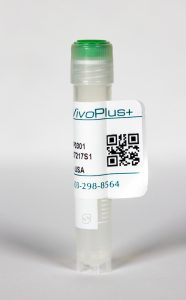InVivoPlus human IgG1 isotype control
| Clone | n/a | ||||||||||
|---|---|---|---|---|---|---|---|---|---|---|---|
| Catalog # | BP0297 | ||||||||||
| Category | InVivoPlus Antibodies | ||||||||||
| Price |
|
The human IgG1 isotype control antibody is purified from human myeloma serum and is of unknown specificity. This antibody is suitable for use as a non-targeting isotype control in various in vitro and in vivo studies. It can also be used as a negative control in various diagnostic applications such as ELISA, Western blot, immunofluorescence, immunohistochemistry, immunoprecipitation, and flow cytometry. For research use only.
| Isotype | Human IgG1, κ |
| Recommended Dilution Buffer | InVivoPure™ pH 7.0 Dilution Buffer |
| Formulation |
|
| Endotoxin |
|
| Aggregation |
|
| Purity |
|
| Sterility | 0.2 µm filtration |
| Production | Purified from human myeloma serum |
| Purification | Protein A |
| RRID | AB_2687817 |
| Molecular Weight | 150 kDa |
| Murine Pathogen Test Results |
|
| Human Pathogen Test Results |
|
| Storage | The antibody solution should be stored at the stock concentration at 4°C. Do not freeze. |
INVIVOMAB HUMAN IGG1 ISOTYPE CONTROL
Li, M., et al. (2019). “Genomic ERBB2/ERBB3 mutations promote PD-L1-mediated immune escape in gallbladder cancer: a whole-exome sequencing analysis.” Gut 68(6): 1024-1033. PubMed
OBJECTIVES: Patients with gallbladder carcinoma (GBC) lack effective treatment methods largely due to the inadequacy of both molecular characterisation and potential therapeutic targets. We previously uncovered a spectrum of genomic alterations and identified recurrent mutations in the ErbB pathway in GBC. Here, we aimed to study recurrent mutations of genes and pathways in a larger cohort of patients with GBC and investigate the potential mechanisms and clinical significance of these mutations. DESIGN: We performed whole-exome sequencing (WES) in 157 patients with GBC. Functional experiments were applied in GBC cell lines to explore the oncogenic roles of ERBB2/ERBB3 hotspot mutations, their correlation with PD-L1 expression and the underlying mechanisms. ERBB inhibitors and a PD-L1 blocker were used to evaluate the anticancer activities in co-culture systems in vitro and in vivo. RESULTS: WES identified ERBB2 and ERBB3 mutations at a frequency of 7%-8% in the expanded cohort, and patients with ERBB2/ERBB3 mutations exhibited poorer prognoses. A set of in vitro and in vivo experiments revealed increased proliferation/migration on ERBB2/ERBB3 mutation. Ectopic expression of ERBB2/ERBB3 mutants upregulated PD-L1 expression in GBC cells, effectively suppressed normal T-cell-mediated cytotoxicity in vitro through activation of the PI3K/Akt signalling pathway and contributed to the growth and progression of GBC in vivo. Treatment with an ERBB2/ERBB3 inhibitor or a PD-L1 monoclonal antibody reversed these immunosuppressive effects, and combined therapy revealed promising therapeutic activities. CONCLUSIONS: ERBB2/ERBB3 mutations may serve as useful biomarkers in identifying patients who are sensitive to ERBB2/ERBB3 inhibitors and PD-L1 monoclonal antibody treatment. TRIAL REGISTRATION NUMBER: NCT02442414;Pre-results.






